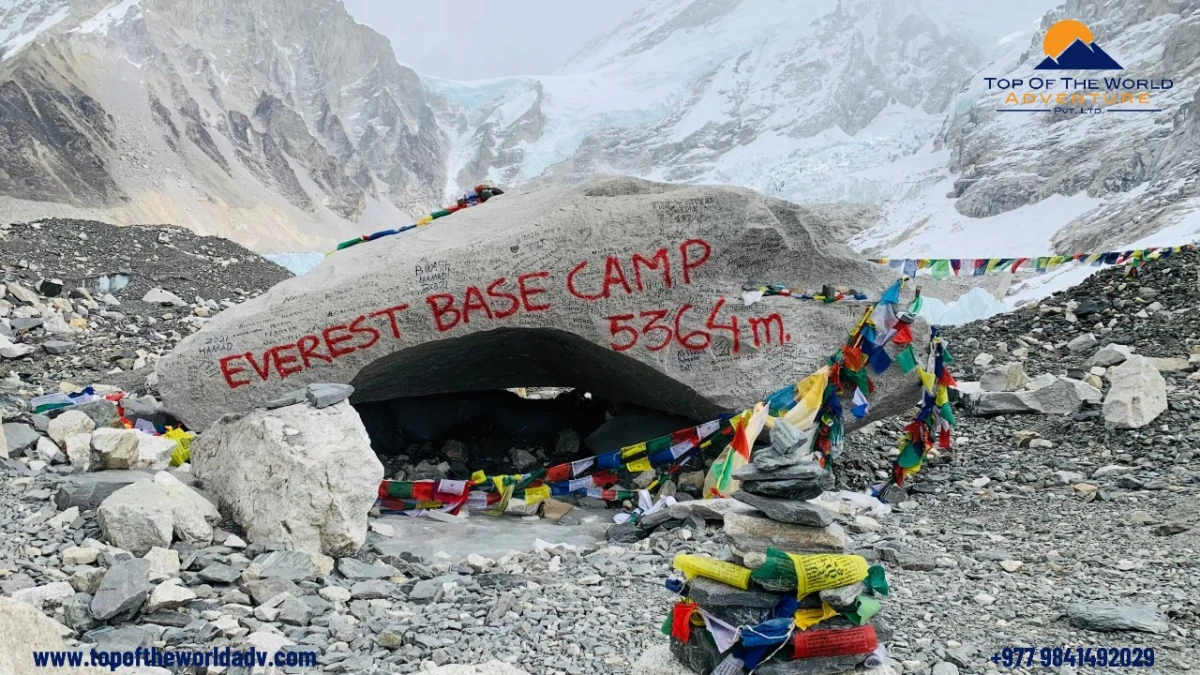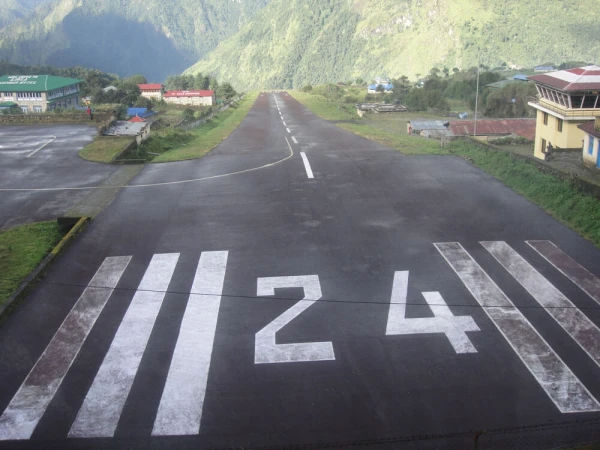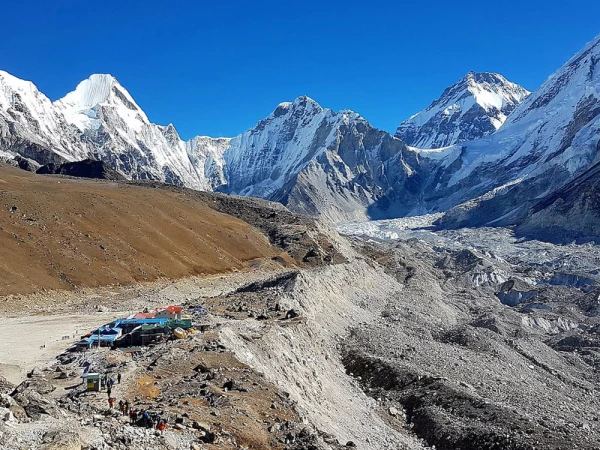Everest Base Camp Trek: An Incredible Himalayan Journey
Everest Base Camp (EBC) Trek is a moderate and rewarding trek in Nepal's Everest region with spectacular panoramic Himalayan views include Everest, Lhotse, Cho Oyu, and Makalu. You will experience Sherpa culture, visit isolated valleys, and marvel at the world's highest peaks.
Highlights
- Trek to the foot of the world's tallest mountain, Mt. Everest.
- Witness a breathtaking sunrise from Kala Patthar with a different perspective of Mt. Everest.
- Experience the Sherpa culture and lifestyle.
- Visit ancient monasteries and stupas.
- Cross thrilling suspension bridges.
- Enjoy breathtaking mountain vistas and varied landscapes.
- Walk along picturesque villages and rhododendron woods.
- Best EBC itinerary for novice trekkers and travelers who want to do a short trek.
- A full day of trek preparation in Kathmandu and two days of acclimatization on trekking
Tour Overview
The Everest Base Camp Trek is a classic Himalayan trek that attracts trekkers from all over the world. The trek typically starts with a flight from Kathmandu to Lukla, the gateway to the Everest region. Trekkers ascend from Lukla via valleys, passing by Sherpa villages, suspension bridges, and diverse landscapes. Acclimatization days are part of the trek to enable trekkers to adjust to the high altitude. The last destination is Everest Base Camp, located at the foot of Mount Everest. Most trekkers also trek up Kala Patthar for panoramic views of Everest. The return normally takes the same route back to Lukla.
Bookings are open for the Everest Base Camp trek on 2025 spring/summer/autumn/winter departures.
Why do the EBC trek?
For several reasons, the Everest Base Camp Trek has achieved its legendary status. First and foremost, it provides the unparalleled experience of being at the base of the world's tallest mountain, Mount Everest. The trek also opens up breathtaking landscapes to the trekkers, with the finest mountain views that include Everest and the towering Lhotse, Nuptse, and Ama Dablam. Aside from the mountains, the trek is an adventure in itself, culturally, as one gets to witness the distinct culture and hospitality of the Sherpa people. Lastly, reaching Everest Base Camp is a great personal fulfillment, a great feat that challenges one's physical and mental boundaries.
What to Expect During the Everest Base Camp Trek?
The Everest Base Camp Trek can be described as a tough but highly rewarding experience. Travelers undertaking the trek can expect several factors that characterize the experience. The trek normally entails beginning with flights to and from Lukla, which is the gateway to the Everest region. Trekkers can expect, on average, to walk for 5 to 7 hours a day. The trek also includes a lot of altitude gain, with trekkers reaching very high altitudes, the highest of which is 5,545 meters at Kala Patthar, a popular vantage point. The trek's lodging is mainly in teahouses and basic guesthouses along the route. Hikers should also be ready for uncooperative weather, as mountain weather can be unpredictable. Last but not least, the terrain itself is uneven and rocky, and some physical stamina and careful walking are needed.
Trekkers should be prepared for basic accommodation and the challenges of high altitude.
Everest Base Camp Trek Distances and Elevations
| Trekking Route | Distance (Kilometers) | Duration (Hours) | Altitude (Meters) |
|---|---|---|---|
| Flight: Kathmandu to Lukla | 140 | 40 mins | 2860 |
| Trek Lukla to Phakding | 8 | 3 to 4 | 2610 |
| Trek from Phakding to Namche Bazar | 10 | 5 to 6 | 3440 |
| Trek to Namche Bazaar (acclimatization hike) | varies | varies | 3440-3900+ |
| Trek Namche Bazaar to Tengboche | 10 | 5 to 6 | 3860 |
| Trek Tengboche to Dingboche | 11 | 5 to 6 | 4410 |
| Trek Dingboche (acclimatization hike) | varies | varies | 4410-4900+ |
| Trek Dingboche to Lobuche | 12 | 5 to 7 | 4940 |
| Trek Lobuche to Gorak Shep | 5 | 2 to 3 | 5164 |
| Trek Gorak Shep to Everest Base Camp | 3 | 2 to 3 | 5364 |
| Trek Gorak Shep to Pheriche (or similar) | 8-12 | 4 to 6 | 4240 |
| Trek Pheriche (or similar) to Namche Bazaar | 20-25 | 10-12 | 3440 |
| Trek from Namche Bazaar to Lukla | 18 | 7-9 | 2860 |
| Lukla to Kathmandu | 140 | 40 mins | 1440 |
Our useful information section has more information about the best time, accommodation, meals, travel insurance, tips, etc. Please check that as well.





.webp)








